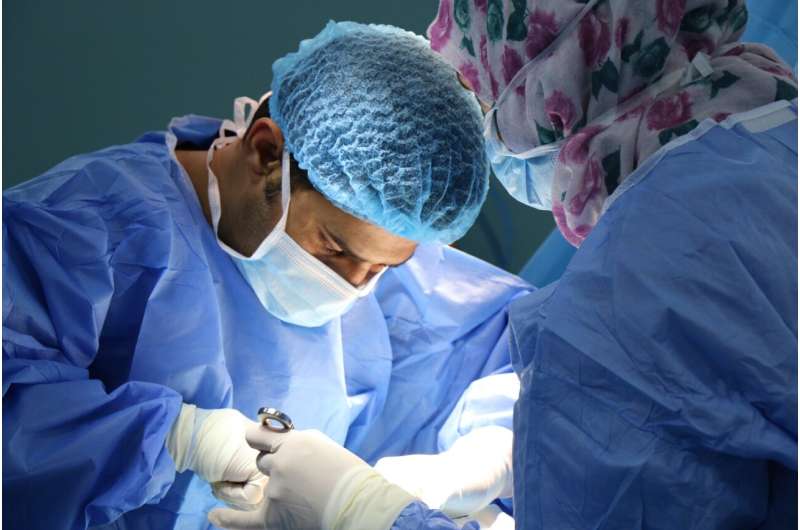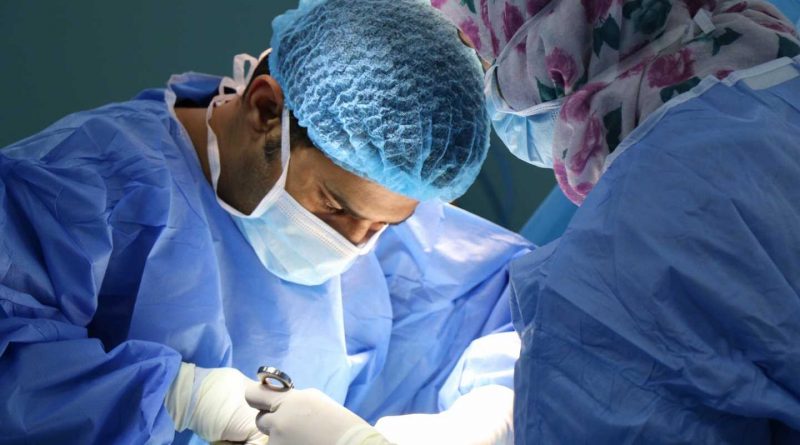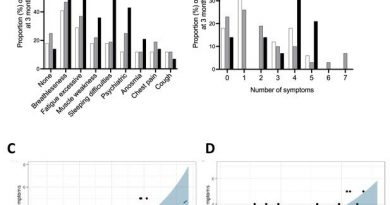11 hours and 25 people: Conjoined twins separated

Dr. José Iglesias gave himself only a few seconds to admire his work.
Situated in a Cook Children’s Medical Center operating room in Fort Worth on Monday, Iglesias and his team of practitioners watched as the 16-week-old conjoined twin girls in front of them were separated for the first time. It marked the pinnacle of one of the most complicated—and highest-stakes—dances the medical director for pediatric surgery had ever choreographed.
The team—including plastic surgeons, neonatologists, anesthesiologists, nurses and medical technicians—allowed the feeling of elation to wash over them and cheered, albeit briefly. So rare is it for a pair of conjoined twins to survive separation surgery that Monday marked the first time it had ever happened at the Fort Worth hospital.
“You get to pop out of that doctor-mode for just a couple of seconds because the whole room realized what happened,” said Iglesias, who led the surgery team. “And, all of a sudden you have to move one of the babies to the other table, which doesn’t usually happen in the operating room.”
AmieLynn and JamieLynn Finley are omphalopagus twins, meaning they were joined at the abdomen and shared at least one organ. Born prematurely on Oct. 3 and sharing a liver, the girls had more specialized medical attention in their first few months than some people have in their entire lives.
Their separation operation took 11 hours, 25 medical professionals and months of planning for every worst-case-scenario the staff could imagine. Because only five to eight pairs of conjoined twins are born each year, surgeons have no road map for how to navigate such a unique and complicated surgery.
So, the expansive team divided into two. One side wore green scrub hats and focused solely on AmieLynn, while the other team wore purple and focused solely on JamieLynn. They printed 3D models of the twins’ chest and practiced what before, during and after the surgery could look like.
With every specially tailored movement, the medical staff inched closer to the moment Valerie Gibbs, Cook Children’s director of perioperative services, could tell the twins’ parents the news they’d waited months to hear: “You have two babies.”
An unexpected diagnosis
Months before the magical moment James Finley and Amanda Arciniega heard their babies were not only safe, but separate, Finley had a very different reaction to hearing he and his wife would have twins.
The Saginaw parents of three other children went to the obstetrician for their first ultrasound expecting to see a scan of their fourth child.
“That’s the baby’s head,” the practitioner told the parents, pointing at the ultrasound screen.
“If that’s the baby’s head, then what is that,” Finley asked, pointing at another spot on the black and white image.
“That’s the other baby’s head,” the woman said.
While getting the news of twins is shocking to most parents, Finley and Arciniega had no idea what more lie ahead. After doctors diagnosed the twins as being conjoined, the family jumped into action.
Amidst the terrifying and uncertain nature of having conjoined twins, Finley and Arciniega got some good news: Early scans showed that the girls shared only one organ, making a potential separation surgery easier.
Doctors at Texas Health Harris Methodist, the hospital across the street from Cook Children’s where Arciniega delivered the twins, began building a team with specialists at Cook Children’s and beyond.
Plastic surgeon Dr. Ben Gbulie, who runs a private practice in Mansfield and is a member of the plastic surgery faculty at Cook Children’s, joined the team when Arciniega was three months’ pregnant. The Finley twins’ surgery is Gbulie’s third conjoined twin operation; most of his colleagues on the case had never worked on a such a procedure.
Gbulie planned how the team would make incisions during the surgery and how those incisions would close once the marathon operation was over. Doctors successfully closed JamieLynn’s incisions, while AmieLynn’s closure had some complications, although Gbulie said he expects she will heal well after some time.
Neonatologists Dr. Mary Frances Lynch and Dr. Chad Barber, who typically care for newborns, started mapping out how the twins would recover from surgery long before they exited the operating room. The medical staff gathered every piece of medical equipment the surgeons could possibly need if anything went wrong.
Even with all of the preparation each team member put into the surgery, no one knew what would happen. The doctors viewed scans of the twins, but what their chest cavities looked like in reality could have shown something different.
Luckily, everything went to plan.
“We have been very fortunate,” Lynch said. “They tolerated things very, very well. But that need for those contingency plans is very important.”
It takes a village
AmieLynn and JamieLynn spent a lot of quality time together. Maybe too much quality time.
“When we first met them, they were always hugging and kissing. But then, as everyone said, it progressed to fighting,” said pediatric surgeon Dr. Marty Knott. “It was fun to watch them grow to get ready for this.”
After months of getting ready to do such an intense and risky operation, each of the medical specialists working on the case bonded with the twins and their family. Their personalities become increasingly apparent—JamieLynn is feisty, AmieLynn is laid back.
Finley and Arciniega found community in their doctors. When Cook Children’s presented a video documenting the surgery journey at a news conference Wednesday, the medical staff cried alongside Arciniega.
“I hope that you can see that they’re not just patients to us. We really love your girls,” Lynch told the parents.
The massive team behind JamieLynn and Amielynn extended far beyond just medical professionals. Famed North Texas Bishop T.D. Jakes prayed with the family before the surgery. Family and friends of the twins’ parents filled the Cook Children’s auditorium seats at the news conference. When the parents made their way to the stage, the audience greeted them with a standing ovation.
Finley and Arciniega and their baby girls climbed the mountain that seemed insurmountable only a few months ago. There’s still a long way to go—their attention moved from surgery to recovery—but Finley said “everything is downhill from here.”
“When we first found out it was like, ‘Woah, why did God choose us to be these girls’ parents,'” Finley said. “I had prayed, had faith. We just had to walk through the steps. We’re very relieved now.”
Next? It will take a long time for the girls to recover. For now, though, Finely and Arciniega are looking forward to the moment they can each cradle one of their babies in their arms.
2023 The Dallas Morning News.
Distributed by Tribune Content Agency, LLC.
Source: Read Full Article



